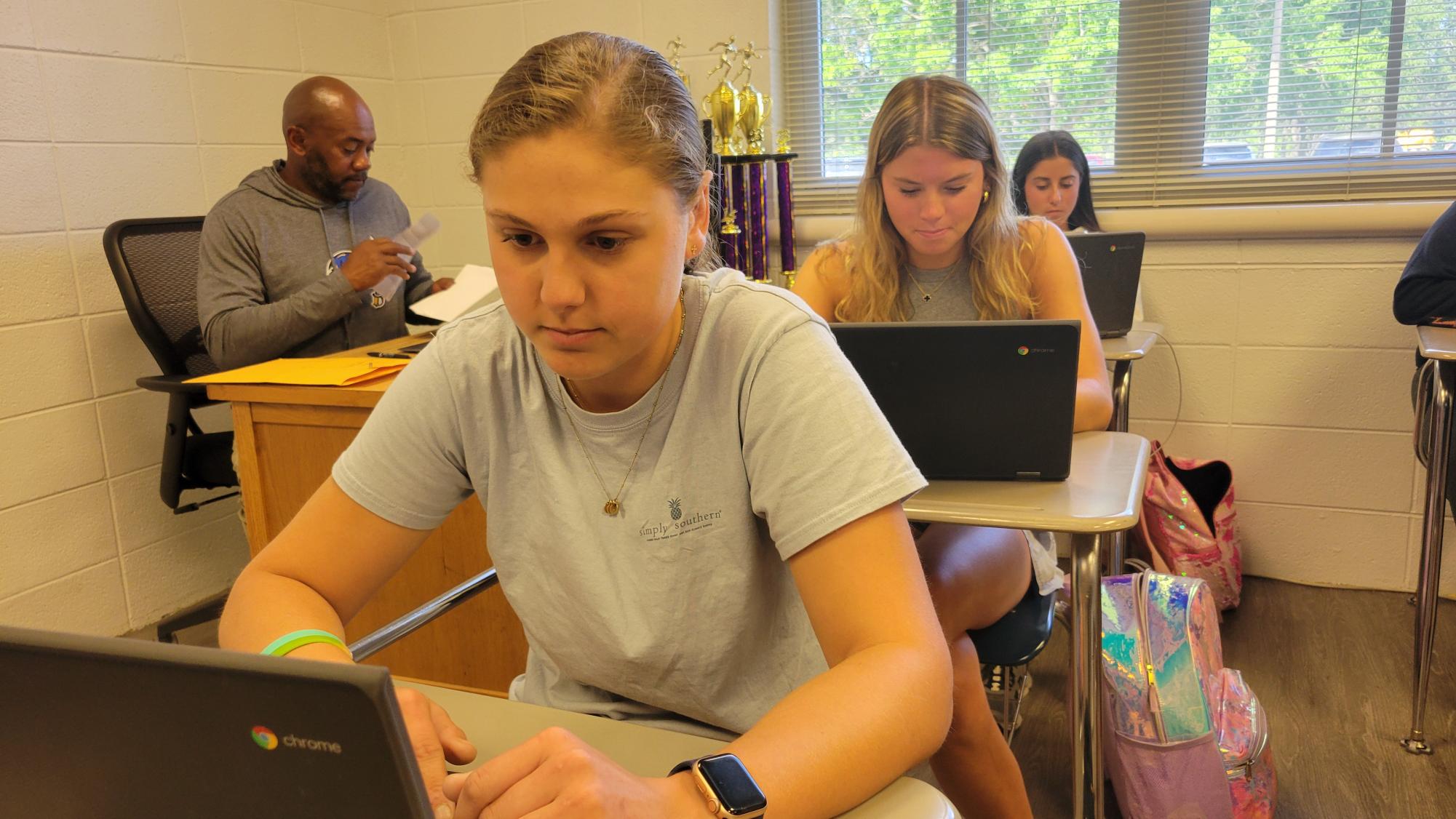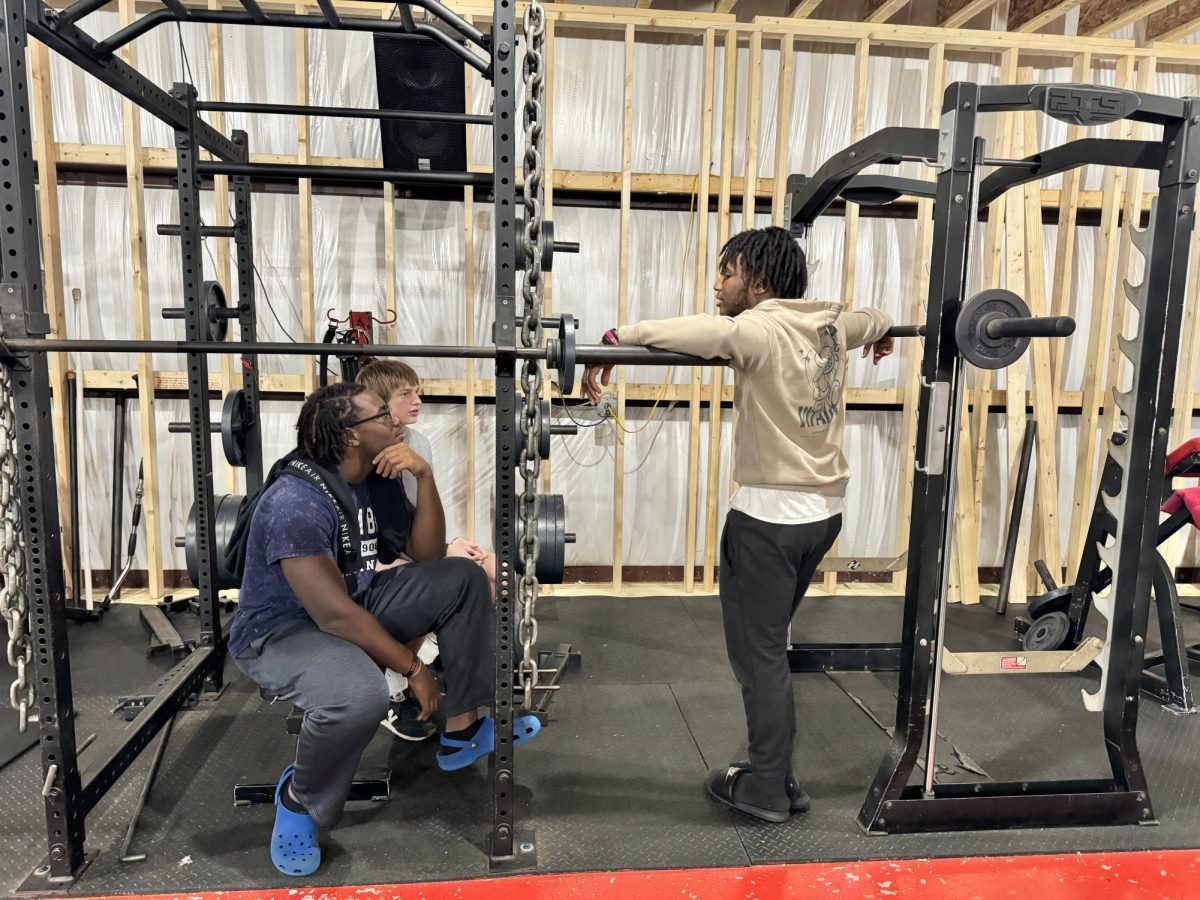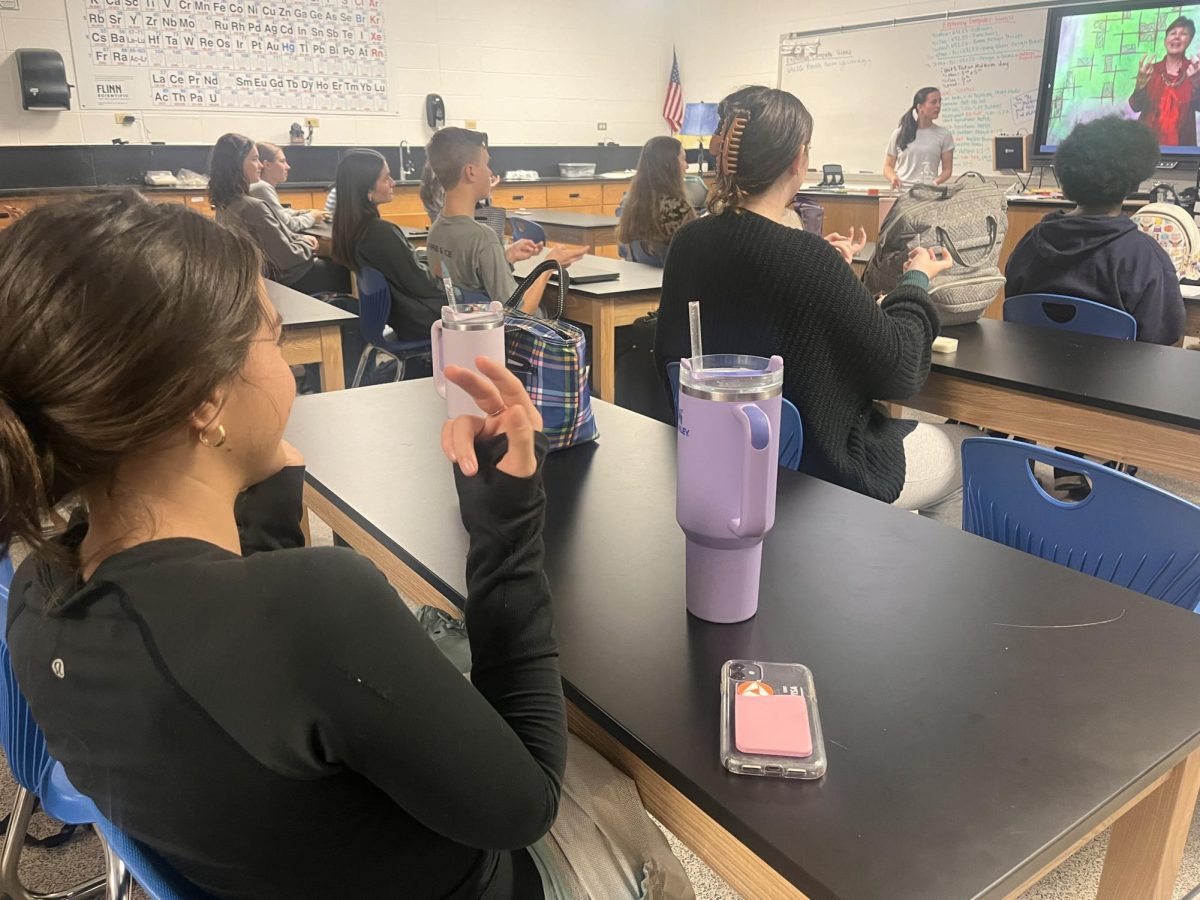Learning by the double
by Jillian Surla, editor-in-chief
What does it take to be successful in college? Most students don’t know the answer to this question and worry through their four years of high school thinking about it. However, some students are able to get ahead and be ready for the challenges, all due to one thing: dual enrollment.
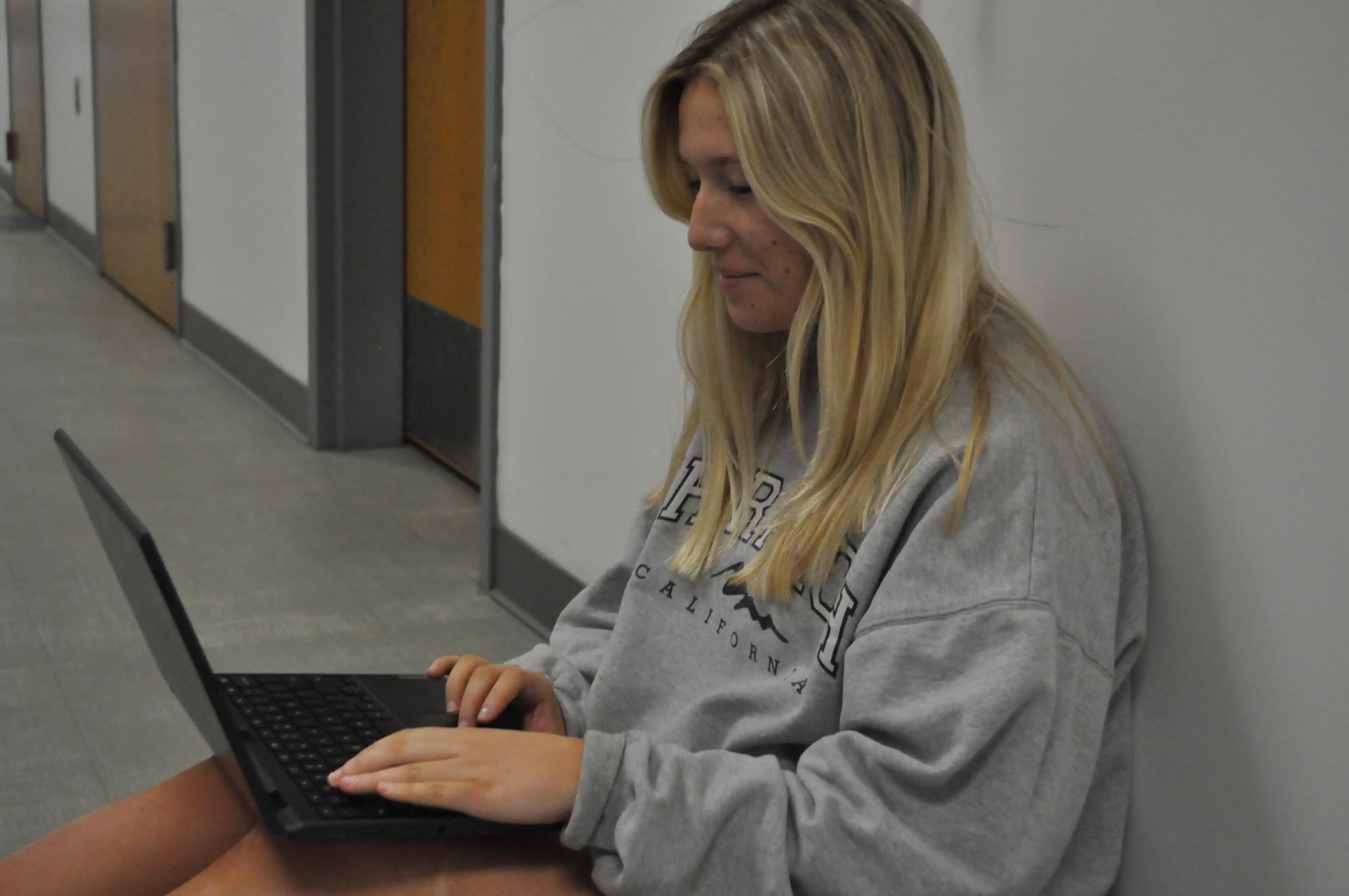
“It sets you ahead in college, but you get the same education as you would if you took it in college, plus you don’t have to pay for as many credit hours as you would in college,” said Brooke Dolfi, freshman at Miami University.
In today’s competitive academic environment, high school students constantly seek ways to make themselves stand out and prepare for higher education. Dual enrollment programs have emerged as a powerful tool to help these students accomplish this.
One of the most significant benefits of dual enrollment is the enrichment it provides. Students have the opportunity to explore subjects they are passionate about or are curious to learn more about, beyond what is provided in the high school curriculum.
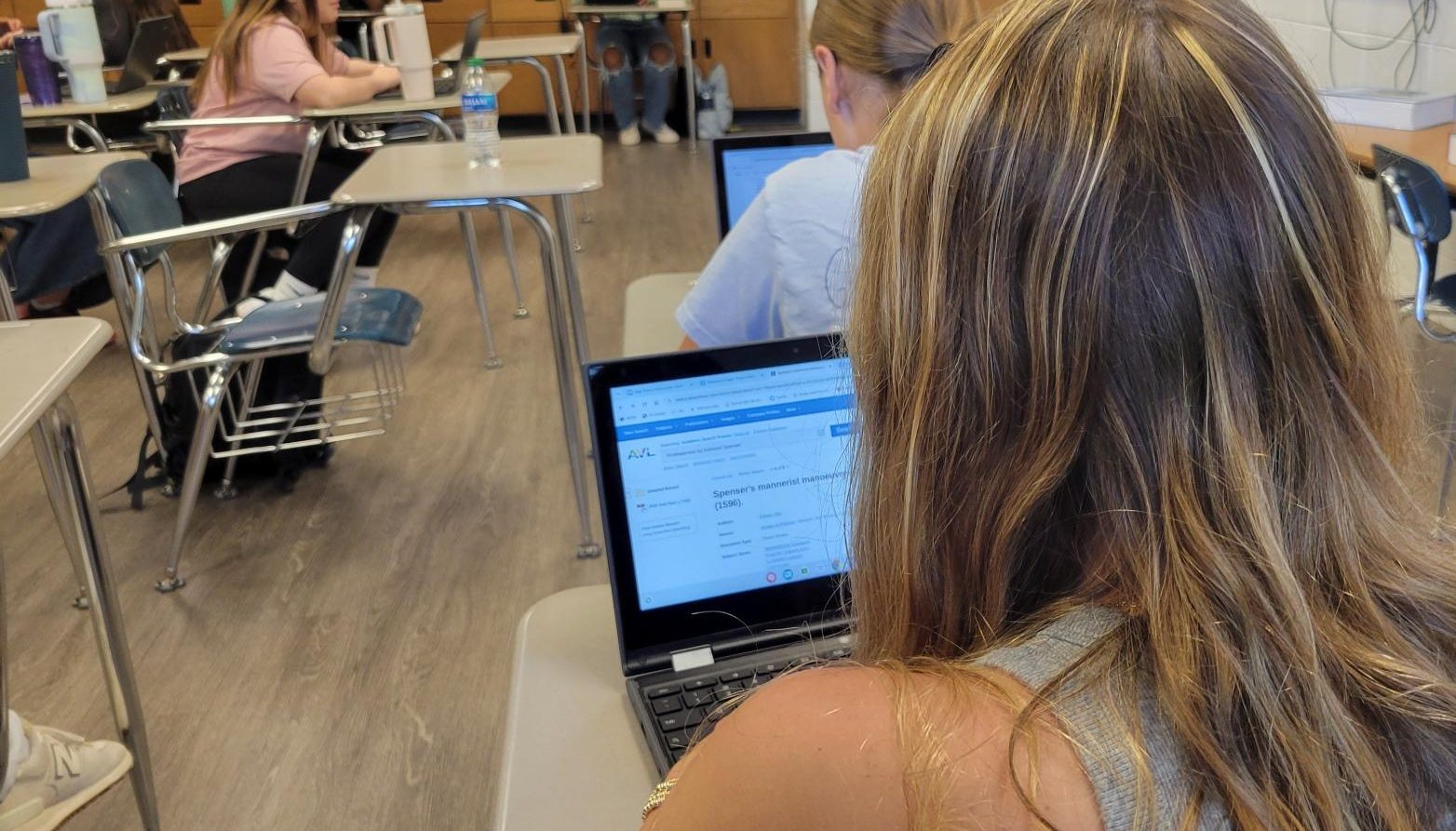
Interested in American Sign Language but disliking the idea of learning from the hearing teacher at her high school, Dolfi found herself signing up for ASL I as a dual enrollment course. Her professor was deaf and she said she was able to be thoroughly “immersed in the deaf community.” The following year, she continued down the path of ASL II.
“I guess just being able to have access to topics that truly interest me instead of just high school curriculum classes, which were limited, was really nice,” Dolfi said.
As for Piper Hall, freshman at Louisiana State University, she enjoyed how her U.S. History professor taught differently from her high school teacher. Hall said her professor loved to be “very involved and hands-on.” She said she hadn’t had many teachers who taught that way, so it was a nice change that helped her learn her own way.
Alivia E., freshman at Ohio State University, took her IB Literature and Performance course with the college to figure out if she wanted to major in theater. The class consisted of reading plays, acting them out, and deciphering them. After the course, she decided against pursuing a performing arts career and was thankful she knew that before entering college.
“Attending night classes and online classes for the past two years has helped me better understand the type of coursework that I will be given in college,” said Emory Bailey, Fairhope High School senior. “It has also allowed me to complete many of the core classes that I would have to take in my freshman year of college, which gives me a more flexible schedule to choose the classes I want to take next year!”
As an added bonus, dual enrollment offers financial advantages. By earning college credits while still in high school, students can potentially reduce the cost of their education; tuition fees for dual enrollment courses are often lower than standard college tuition, and in some cases, may even be paid for entirely by the school.
Hall said that “the dual enrollment test at the end being free was definitely a plus when compared to the AP exam,” which is upward of $80.
Dual enrollment programs have the power to transform students’ lives by providing academic enrichment, financial savings and opportunities for personal growth and exploration. It can unlock the potential of students from all backgrounds and equip them with the skills, knowledge and confidence to succeed in higher education and beyond.
As education and academia continues to evolve, dual enrollment remains a beacon of hope to those who strive for a brighter, more promising future.

